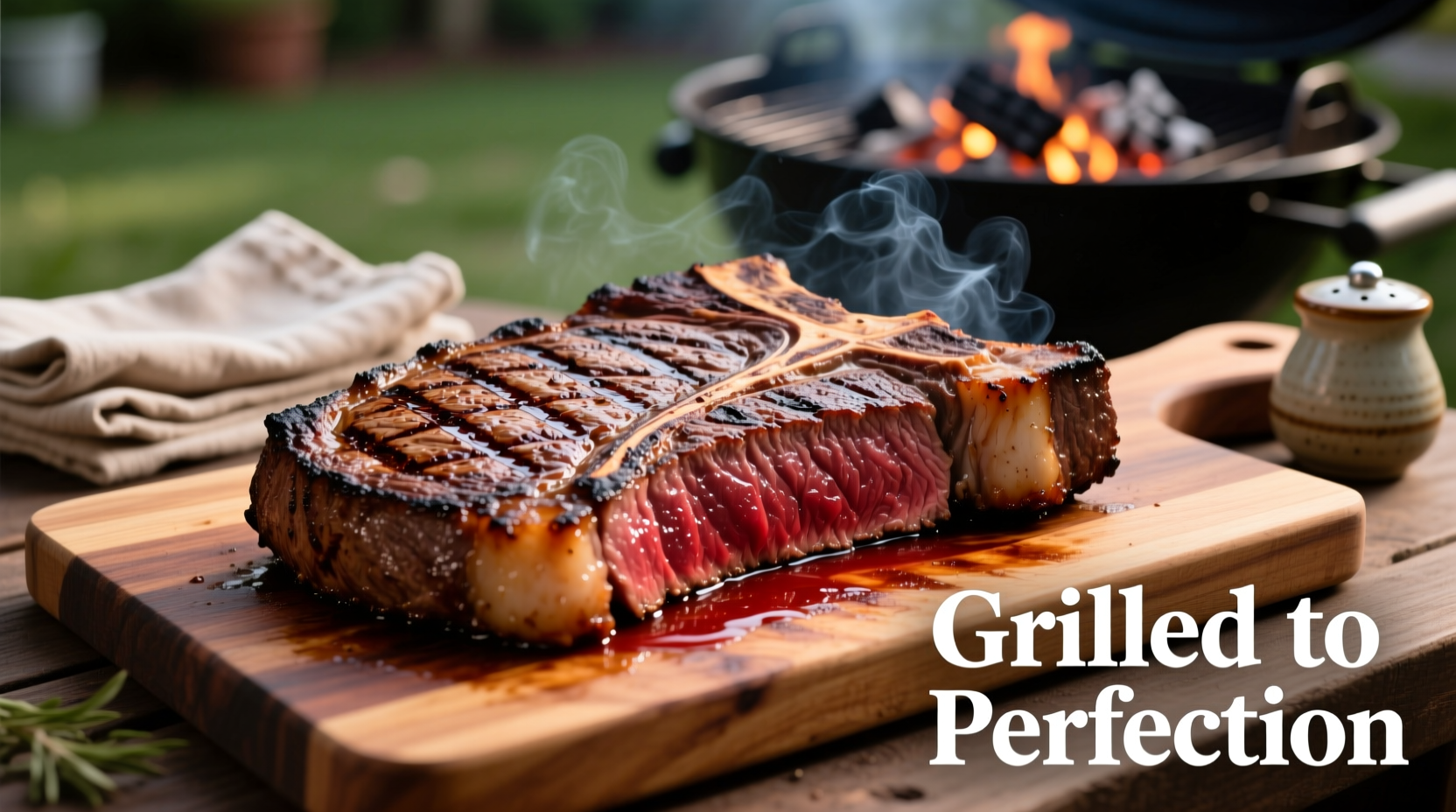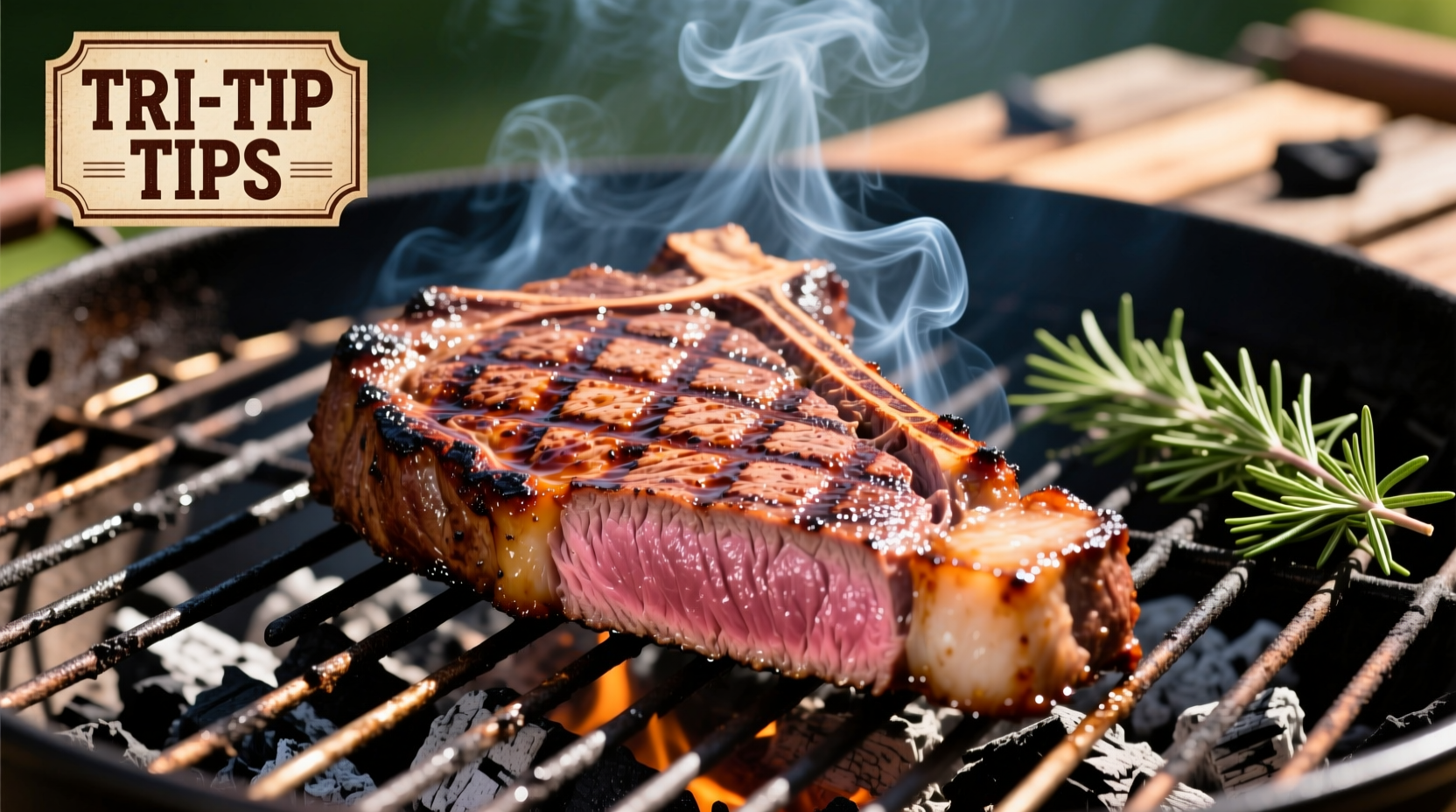Grill a perfectly tender tri tip steak by bringing the meat to room temperature, seasoning generously, searing over direct heat (450°F) for 5-7 minutes per side, then moving to indirect heat until reaching 130-135°F internal temperature for medium-rare. Always rest 10-15 minutes before slicing against the grain for maximum tenderness.
Nothing beats the smoky char of a perfectly grilled tri tip steak. This triangular cut from the bottom sirloin offers exceptional marbling and rich beef flavor when cooked properly on the barbecue. Many home cooks struggle with this cut because of its unique grain structure and tendency to become tough if mishandled. But with the right technique, you'll achieve restaurant-quality results that impress every time.
Selecting and Preparing Your Tri Tip
Choose a tri tip with bright red color and fine marbling throughout. Look for at least 1–1.5 inches of thickness for even cooking. Before seasoning, trim excess fat to about 1/4 inch thickness—this renders during cooking without causing flare-ups. Pat the meat thoroughly dry with paper towels; moisture is the enemy of proper searing.
For best results, bring your tri tip to room temperature by removing it from the refrigerator 60–90 minutes before grilling. This ensures even cooking from edge to center. Season generously with coarse kosher salt and freshly ground black pepper at minimum. For deeper flavor development, consider a dry rub with garlic powder, onion powder, and smoked paprika applied 2–4 hours before cooking.
Mastering the Two-Zone BBQ Setup
Proper heat management separates good BBQ from great BBQ. Create a two-zone fire by arranging charcoal on one side of your grill or turning on only half your gas burners. This setup provides both direct heat for searing and indirect heat for gentle cooking.
| Cooking Stage | Heat Zone | Temperature | Duration |
|---|---|---|---|
| Initial Sear | Direct | 450°F | 5-7 min per side |
| Main Cooking | Indirect | 325°F | 15-25 min |
| Resting | Off grill | Room temp | 10-15 min |
Preheat your grill to 450°F on the direct heat side. Clean and oil the grates thoroughly to prevent sticking. Place the tri tip on the hottest part of the grill, positioning it perpendicular to the grates for those attractive crosshatch marks. Resist the urge to move it for at least 4 minutes to develop a proper crust.
Monitoring Doneness Without Guesswork
Tri tip's irregular shape makes visual doneness assessment unreliable. Always use an instant-read thermometer for accuracy. Insert it horizontally into the thickest part of the meat, avoiding fat pockets.
The USDA recommends cooking beef to 145°F for medium, but for optimal tenderness with tri tip, remove it from the grill at 125°F for rare, 130°F for medium-rare, or 135°F for medium. Remember that carryover cooking will raise the internal temperature 5–10°F during resting. This precision cooking approach prevents the common mistake of overcooking this lean cut.

Slicing Technique That Makes All the Difference
Tri tip has two distinct grain directions running perpendicular to each other. This unique characteristic requires special attention when slicing. First, identify the grain direction in each section. Slice the top portion perpendicular to its grain, then rotate the bottom portion and slice perpendicular to its different grain direction.
Use a sharp carving knife and cut against the grain in 1/4-inch slices. This technique shortens the muscle fibers, creating noticeably more tender bites. Slicing too thick or with the grain results in chewy, stringy meat regardless of perfect cooking temperature.
Troubleshooting Common BBQ Tri Tip Problems
Problem: Uneven cooking due to tri tip's triangular shape
Solution: Rotate the meat 180 degrees halfway through searing to ensure even exposure to heat. For extreme thickness variations, fold the thin end under slightly before cooking.
Problem: Excessive flare-ups during cooking
Solution: Move the meat to indirect heat immediately when flare-ups occur. Trim excess fat beforehand and keep a spray bottle of water nearby for emergencies.
Problem: Meat remains tough despite proper temperature
Solution: You likely sliced with the grain rather than against it. Always identify and cut perpendicular to the muscle fibers for maximum tenderness.
When BBQ Isn't Ideal for Tri Tip
While grilling produces excellent results, certain conditions make alternative methods preferable. During extreme weather (below 40°F or above 95°F), maintaining consistent grill temperature becomes challenging. When cooking for large gatherings where precise timing matters, consider reverse-searing in the oven followed by a quick sear on the grill. For those without outdoor cooking space, a cast-iron skillet with a smokeless indoor grilling technique works surprisingly well.
Perfect Pairings for Your BBQ Tri Tip
Complement your perfectly grilled tri tip with simple sides that don't compete with its rich flavor. Classic pairings include grilled vegetables (zucchini, bell peppers, and red onions), garlic mashed potatoes, and a fresh arugula salad with lemon vinaigrette. For beverages, medium-bodied red wines like Pinot Noir or Malbec cut through the richness while enhancing the beef's natural flavors.
Advanced Techniques for Next-Level Results
For deeper flavor penetration, try a simple brine: dissolve 1/4 cup kosher salt and 1/4 cup sugar in 4 cups water, submerge the tri tip for 2-4 hours, then rinse and dry thoroughly before seasoning. Another professional technique is to finish with compound butter—mix softened butter with minced garlic, fresh herbs, and a splash of red wine vinegar, then place a slice on the hot meat during resting.
Essential Tools for BBQ Tri Tip Success
While you don't need expensive equipment, these tools significantly improve results: an instant-read thermometer (Thermapen or similar), heavy-duty tongs for flipping, a two-zone grill setup, and a wire rack for resting. Avoid fork piercing during cooking—use tongs instead to prevent precious juices from escaping.











 浙公网安备
33010002000092号
浙公网安备
33010002000092号 浙B2-20120091-4
浙B2-20120091-4